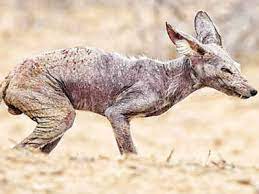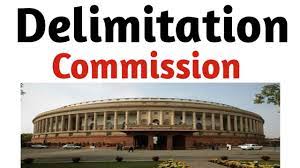Today Current Affairs: 31st March 2022 for UPSC IAS exams, State PSC exams, SSC CGL, State SSC, RRB, Railways, Banking Exam & IBPS, etc
Table of Contents
BRICS Media Forum:

Leading media groups from the five BRICS countries (Brazil, Russia, India, China and South Africa) have put together a three-month long training programme for journalists.
- The programme was an initiative of the BRICS Media Forum.
- BRICS Media Forum was established in 2015 by media organisations from the five countries, including The Hindu, Brazil’s CMA Group, Russia’s Sputnik, China’s Xinhua and South Africa’s Independent Media.
- The Forum was “conceived and developed so that it can function as an independent initiative and set of practical activities undertaken within the broad framework of BRICS cooperation”.
- BRICS is the group composed of the five major emerging countries – Brazil, Russia, India, China and South Africa.
- It together represents about 42% of the population, 23% of GDP, 30% of the territory and 18% of the global trade.
- The acronym BRIC was coined by economist ‘Jim O’Neill’ of Goldman Sachs in 2001 to indicate the emerging powers that would be, alongside the United States, the five largest economies of the world in the 21st century.
- In 2006, BRIC countries started their dialogue, which since 2009 takes place at annual meetings of heads of state and government.
- In 2011, with South Africa joining the group, the BRICS reached its final composition, incorporating a country from the African continent.
Assam-Meghalaya Border Dispute:

Assam and Meghalaya have partially resolved a 50-year-old border dispute in six of the 12 sectors along their 885-km boundary.
- Both states signed a “historic” agreement for a closure in six disputed sectors that were taken up for resolution in the first phase.
- The six disputed sectors are: Tarabari, Gizang, Hahim, Boklapara, Khanapara-Pillangkata and Ratacherra under the Kamrup, Kamrup (Metro) and Cachar districts of Assam and the West Khasi Hills, Ri-Bhoi and East Jaintia Hills districts of Meghalaya.
- Assam and Meghalaya share an 885-km-long border. Meghalaya was carved out of Assam under the Assam Reorganisation Act, 1971, a law that it challenged, leading to disputes.
- As of now, there are 12 points of dispute along their borders.
- These include the areas of Upper Tarabari, Gazang reserve forest, Hahim, Langpih, Borduar, Boklapara, Nongwah, Matamur, Khanapara-Pilangkata, Deshdemoreah Block I and Block II, Khanduli and Retacherra.
- A major point of contention between Assam and Meghalaya is the district of Langpih in West Garo Hills bordering the Kamrup district of Assam.
- Langpih was part of the Kamrup district during the British colonial period but post-Independence, it became part of the Garo Hills and Meghalaya.
- Assam considers it to be part of the Mikir Hills in Assam. Meghalaya has questioned Blocks I and II of the Mikir Hills -now Karbi Anglong region – being part of Assam. Meghalaya says these were parts of erstwhile United Khasi and Jaintia Hills districts.
- Both Assam and Meghalaya have constituted border dispute settlement committees.
- Recently, Assam Chief Minister Himanta Biswa Sarma and his Meghalaya counterpart Conrad Sangma decided to set up two regional committees to resolve the border disputes in a phased manner.
- Sarma recently said five aspects were to be considered in resolving the border dispute.
- They are historical facts, ethnicity, administrative convenience, mood and sentiments of the people concerned and the contiguity of the land.
The Frontier 2022 Report:

The UNEP Annual Frontier Report 2022 was released recently.
- It was titled ‘Noise, Blazes and Mismatches’.
Highlights of the report:
- Dhaka has been ranked as the noisiest city in the world which is followed by Moradabad, Uttar Pradesh.
- Five Indian cities have been ranked in this list of being among the noisiest cities of the world which are Asansol, Jaipur, Kolkata, New Delhi, and Moradabad.
- Irbid, Jordan has been ranked as the world’s quietest city and it is followed by Lyon, France, and Madrid, Spain.
State Of World Population 2022 Report:

The United Nations Population Fund’s (UNFPA) flagship State of World Population Report 2022 titled “Seeing the Unseen: The case for action in the neglected crisis of unintended pregnancy” was launched.
Key Findings of the Report:
- Between 2015 and 2019, there were roughly 121 million unintended pregnancies globally each year.
- Globally, an estimated 257 million women who want to avoid pregnancy are not using safe, modern methods of contraception.
- Nearly a quarter of all women are not able to say no to sex.
- Contraceptive use is 53% lower among women who have experienced intimate partner violence.
- Rape-related pregnancies are equally or more likely to occur than pregnancies from consensual sex.
- Over 60% of unintended pregnancies, and almost 30% of all pregnancies, end in abortion.
- 45% of all abortions performed globally are unsafe.
- In developing countries, unsafe abortions cost an estimated USD 553 million per year in treatment costs alone.
What Is Shrinkflation?

Due to rising costs many companies are practising “Shrinkflation”.
- Shrinkflation is the practice of reducing the size of a product while maintaining its sticker price.
- It is a form of hidden inflation.
- Raising the price per given amount is a strategy employed by companies, mainly in the food and beverage industries, to stealthily boost profit margins or maintain them in the face of rising input costs.
- Shrinkflation is also referred to as package downsizing in business and academic research.
- A less common usage of this term may refer to a macroeconomic situation where the economy is contracting while also experiencing a rising price level.
- Macroeconomics is the study of the behaviour of a national or regional economy as a whole.
- It is concerned with understanding economy-wide events such as the total amount of goods and services produced, the level of unemployment, and the general behaviour of prices.
- Nowadays, shrinkflation is a common practice among producers.
- The number of products that undergo downsizing increases every year.
- Large producers in the European and North American markets rely on this strategy to maintain the competitive prices of their products without significantly reducing their profits.
- At the same time, shrinkflation can frequently lead to customer frustration and deteriorating consumer sentiment regarding the producer’s brand.
- Rising production costs are generally the primary cause of shrinkflation.
- Increases in the cost of ingredients or raw materials, energy commodities, and labour increase production costs and subsequently diminish producers’ profit margins.
- Reducing the products’ weight, volume, or quantity while keeping the same retail price tag can improve the producer’s profit margin.
- At the same time, the average consumer will not notice a small reduction in quantity. Thus, sales volume will not be affected.
- Fierce competition in the marketplace may also cause shrinkflation.
- The food and beverage industry is generally an extremely competitive one, as consumers are able to access a variety of available substitutes.
- Therefore, producers look for options that will enable them to keep the favour of their customers and maintain their profit margins at the same time.
Desert Fox And Mange Disease:

A few Desert Foxes were spotted in the scrub forests of Rajasthan’s Jaisalmer district, suffering from a loss of fur due to the Mange Skin Disease.
- There were 8,331 foxes — both Indian and desert foxes — in the state according to the 2019 wildlife census of Rajasthan.
Desert Fox:
- Common Name: White-footed fox
- Scientific Name: Vulpes vulpes pusilla
- Desert fox is the third sub-species of red fox in India.
- Other two subspecies are: the Tibetan Red Fox and the Kashmir Red Fox.
- They can be differentiated from other fox species by their white tail-tip. Beady eyes and a small snout give them an endearing, almost adorable look.
- Its range does not overlap with that of other red fox sub-species.
- Desert fox inhabits the dry and semi-arid regions of western and north-western India.
- Desert foxes occupy less than half of their potential habitats in India.
- Desert foxes can be found wandering around sand dunes and semi-dried river beds, where they build their dens.
- They are omnivores consuming almost everything from berries and plants to desert rodents, insects, spiders, small birds, and lizards, like the spiny tail.
- They are threatened by habitat loss, road-related mortality and negative interactions with free-ranging/domestic dogs.
- Protection Status:
- IUCN Red List: Least Concern
- CITES listing: Appendix II
- India’s Wildlife (Protection) Act: Schedule II
Mange:
- Mange is a skin disease of animals caused by mite infestations, characterized by inflammation, itching, thickening of the skin, and hair loss.
- The most severe form of mange is caused by varieties of the mite Sarcoptes scabiei, which also causes human scabies.
- Some form of mange is known in all domestic animals, although many varieties of mange mites infest only one species.
- They are transmitted between animals by direct contact and by objects that have been in contact with infested animals.
Challenge On Delimitation Commission:

A plea has been moved in the Supreme Court by two Kashmir residents challenging the Centre’s decision to constitute the delimitation commission for redrawing the assembly and Lok Sabha constituencies in Union Territory of Jammu and Kashmir.
- The plea sought declaration that the increase of number of seats from 107 to 114 (including 24 seats in Pakistan Occupied Kashmir) in Jammu & Kashmir is Ultra vires the Constitutional Provisions such as Articles 14, 81, 82, 170, 330 and 332 and Statutory Provisions particularly under Section 63 of the Jammu & Kashmir Reorganisation Act, 2019.
- The plea said that while Article 170 of the Constitution of India provides that the next delimitation in the country will be taken up after 2026.
- On March 6, 2020, the Union Government, Ministry of Law and Justice (Legislative Department) had issued a notification in exercise of power under Section 3 of the Delimitation Act, 2002, constituting a Delimitation Commission, with former Supreme Court judge (Retd) Ranjana Prakash Desai as Chairperson, for the purpose of delimitation of Assembly and Parliamentary constituencies in the Union Territory of Jammu and Kashmir and the state of Assam, Arunachal Pradesh, Manipur and Nagaland, for a period of one year.
Constitutional Provisions:
- Under Article 82, the Parliament enacts a Delimitation Act after every Census.
- Under Article 170, States also get divided into territorial constituencies as per Delimitation Act after every Census.
Legal Aid Clinic : NCW

In a move to make legal aid more accessible for women, the National Commission for Women (NCW) in collaboration with Delhi State Legal Services Authority (DSLSA) has launched a legal aid clinic which will act as a single-window facility for resolving grievances of women by offering them free legal assistance.
- NCW is also planning to set up similar legal services clinics in other State Commissions for Women.
- Under the new legal aid clinic, counseling will be provided for walk-in complainants, women in distress will be given legal assistance, advice and information on various schemes of the National Legal Services Authority (NALSA)/ DSLSA, assistance in mahila jansunwai, free legal aid, hearings in matrimonial cases and other complaints registered with the Commission will be provided among other services.
About NCW:
- Set up in 1992 under the National commission Act.
- It was established to review the constitutional and legal safeguards for women.
- It enjoys all the powers of a civil court.
- It table reports to the central government, every year and at such other times as the commission may deem fit, reports upon the working of those safeguards.




